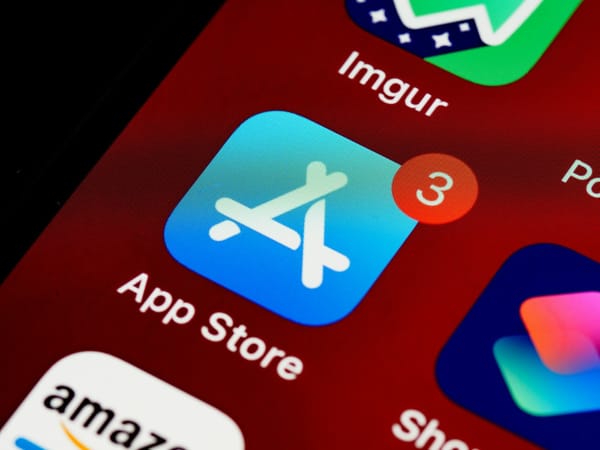Apple’s ‘Walled Garden’ Faces Pressure: What It Means for Users, Developers, and Security

In a watershed moment for mobile ecosystems, regulators in the UK are pushing Apple toward allowing third-party app stores on iPhones — a dramatic shift from its long-standing closed model.
This development, alongside mounting calls to scrutinize Apple’s control over app distribution and payments, could reshape security, privacy, and power balances in the mobile world.
The UK’s Competition and Markets Authority (CMA) has formally designated both Apple and Google as holding “strategic market status,” effectively acknowledging that the two dominate mobile platforms and wield outsized influence.
In doing so, the CMA is preparing to force changes across app stores, operating systems, and browser rules — changes that would especially affect Apple’s closed ecosystem.
Observers see the move as part of a broader regulatory wave sweeping through Europe (and mirrored in legislative proposals elsewhere), seeking to break up platform gatekeeping and open up ecosystems that long have resisted competition.
Read: Apple to Allow Sideloading Apps in iOS 17 as EU Pressures ‘Gatekeeper’ Companies
Apple may have to open up to new app stores
In response to the CMA’s ruling, Apple may soon have to permit competing app stores on iPhones — a radical departure from its current model where all user apps on iOS must flow through its App Store.
For developers, it presents the possibility of alternative distribution channels with potentially lower commission fees or more flexible rules. Some may welcome the chance to bypass Apple’s in-app purchase cut or strict policies.
But Apple has strongly warned that relaxing control could degrade security and hurt users. In its view, the curated “walled garden” ensures rigorous screening of apps, malware checks, and tight integration with system updates — protections more difficult to replicate in a fragmented environment.
Read: The Security Implications of ‘Sideloading’ for iPhone Users
From a security lens, opening up the platform raises important questions: will alternative app stores enforce the same scrutiny? Could malicious or poorly vetted apps proliferate? Historically, on more open platforms, less scrupulous stores have become havens for adware, malware, or phishing attacks. For most users – at least in the early phase – sticking with Apple’s own store would remain safest.
At the same time, this transition offers a chance for new, security-conscious app stores to emerge — ones that might prioritize privacy, bespoke review models, or compliance transparency.
Implications for users and the industry
This potential shift is not just a change in app economics — it threatens long-standing assumptions about platform trust and control.
User security and risk
With a proliferation of app stores, users will have to choose where to download apps. An ill-informed choice could expose devices to unvetted software, weak security policies, or malicious code. Even if new stores adopt strong standards, achieving the level of trust Apple’s centralized review has engendered will be a heavy lift — and a transition period may be dangerous.
Developer dynamics
Developers frustrated with Apple’s commission model may see this as a major win — more negotiation power, alternative paths to market, and possibly more favorable terms. But they’ll also face fragmentation challenges: managing multiple distribution systems, ensuring security across channels, and handling divergent review standards.
Platform security model evolution
Apple’s model is built on control: only vetted apps, sandboxing, system updates tightly managed. A more open environment would require rethinking foundational security architecture, forcing Apple to rethink enforcing permission models, perhaps even to reserve certain APIs or features for its own store.
Regulation ripple effects
The UK’s move, if it comes to fruition, could catalyze pressure in other jurisdictions. If Apple concedes change here, other regulators may demand similar openness — accelerating a potential global shift in how mobile ecosystems operate.
Advice for consumers
Be cautious of alternative stores — Until review standards mature, only use highly trusted app marketplaces.
Verify app provenance and security signals — Look for things like developer reputation, app signing, update frequency, and community feedback.
Keep your iPhone and Mac updated — Regardless of store, vulnerabilities will always exist; timely patches remain critical.
Use layered protections — Use an independent security solution on your device to mitigate risk.
Stay informed — As the landscape changes, new rules, store models, and security guidance will emerge rapidly.
Bottom line
The CMA’s move to label Apple and Google as strategic market actors marks a turning point in mobile regulation. If forced to open iOS to external app stores, Apple will face profound technical, security, and business challenges.
For users, the change may bring greater choice — but also new responsibilities and risks. The real test will be whether alternative stores can deliver the trust, safety, and usability that users have come to expect from Apple’s tightly controlled ecosystem.
You may also want to read:
Five Ways Your iPhone Can Be Hacked – And How to Prevent It
What Is Lockdown Mode on iPhone and Mac? How Apple’s Spyware Shield Works – and When to Use It
FTC Demands Answers from AI ‘Companion’ Makers on Kids’ Safety
tags
Author
Filip has 17 years of experience in technology journalism. In recent years, he has focused on cybersecurity in his role as a Security Analyst at Bitdefender.
View all postsRight now Top posts
Cybercriminals Use Fake Leonardo DiCaprio Film Torrent to Spread Agent Tesla Malware
December 11, 2025
Genshin Impact Scam Alert: The Most Common Tricks Used Against Players
December 05, 2025
How Kids Get Automatically Added Into WhatsApp Groups with Horrific Imagery Without Consent
November 24, 2025
Scammers Exploit Hype Around Starbucks Bearista Cup to Steal Data and Money, Bitdefender Antispam Lab Warns
November 18, 2025
FOLLOW US ON SOCIAL MEDIA
You might also like
Bookmarks








